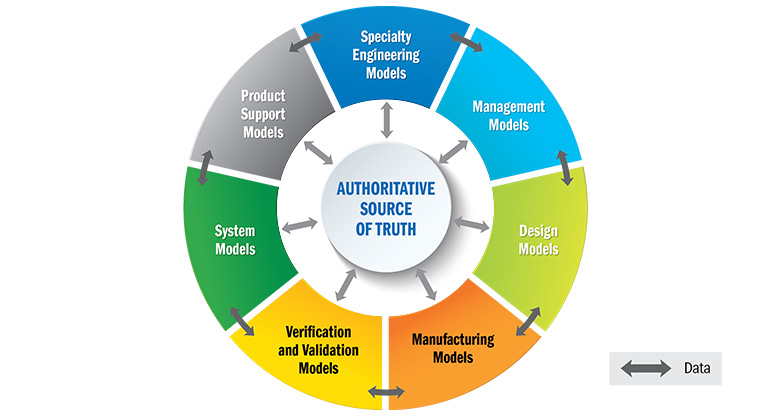
Digital Engineering Validation Tool Enables Efficiency Gains
Introduced last year, our popular free tool guides model styles for automated system model reviews; now, we have released a new update with more features
Digital engineering has revolutionized how we capture and use engineering information, which has made models, specifically system models, become central components.
System models are descriptive architecture models that digital engineers typically produce using model-based systems engineering (MBSE) approaches and then capture in the Systems Modeling Language (SysML). These models serve as the authoritative source of truth for system use cases, interfaces, key performance parameters, and functions, including how the planned solution will satisfy system requirements. These models are also the foundation for specialty engineering analysis, integration, verification, validation, training, technical documentation, and sustainment.
Descriptive architecture models are growing in demand, and an increasing number of SAIC's procurements involves providing models as part of the customers' request for proposals (RFPs).
I believe getting a system model right is a key to success, but I also acknowledge how challenging that can be. The language and tools being used to make these models provide modelers with overwhelming options. I call the selection of language and tool options a model style, which can include everything from the type of model elements to use to how a modeler names them.
Most model styles will not violate language rules but rather further restrict what is allowed. This means the automated error checking available in many modeling tools will not enforce model style. So, modelers need to have deep knowledge of the strengths and limitations of the available options to accurately select how to express engineering concepts in a model.
Unfortunately, such deep experience is still rare. A good model style still requires hours of error-prone and tedious manual review, and a poor model style can cripple a model.

SAIC’s Digital Engineering Validation Tool reduces model errors
To improve the quality and functionality of system models, SAIC's digital engineering team developed and released the SAIC Digital Engineering Validation Tool last year to the worldwide engineering community.
Since we launched the free tool, it has been downloaded about 200 times by individuals and organizations, including:
- Aerospace Corporation
- Boeing
- Ford Motor Company
- General Atomics
- Johns Hopkins University
- Lockheed Martin
- MAC
- MITRE
- Northrop Grumman
- Ocado
- Raytheon
- Stevens Institute of Technology
- U.S. Air Force
- U.S. Army
- U.S. Department of Defense
- U.S. Navy
- ZF Friedrichshafen AG
The response was enthusiastic, and we received requests to expand the tool's capability. A member of one of the organizations that used the tool told us, “We are quite impressed! Thanks so much for this helpful tool.”
I am excited by the marked interest in this tool, which is enabling access to better digital engineering models and model styles for the engineering community.
I am likewise excited to announce a major update to the tool. Our team has received a lot of feedback and input to improve its capabilities, and we believe this update will help organizations reach their digital transformation goals even better than before.
ADDITIONAL READING: Popular Digital Engineering Validation Tool Now Supports Failure Analysis
Update improves digital transformation
The original Digital Engineering Validation Tool defined a model style for Dassault Systemes/No Magic's MagicDraw system modeling tool via a profile that automates model style review by using a collection of validation rules. We also included customizations to allow deeply nested architectures and ensure consistency between behavioral and structural views. The goal was to overcome the significant inefficiencies in reviewing model styles manually.
This new update includes additional validation rules for MagicDraw, and our tool now provides a parallel validation capability for the IBM Rational Rhapsody products. The new validation rules include more rules relating behavior and structure, sophisticated detection of illogical relationships in hierarchical architectures, and exceptions for edge cases discovered by initial users.
In addition, we have included a model-based style guide for MagicDraw that describes the style the validation rules enforces, explains every rule, and describes why each rule is important.
Finally, an example system model in MagicDraw — built using the style guide and the validation rules — is also included for reference. Both the style guide and example model were popular user requests to help them explain the model style to stakeholders, and I am excited to see how they will receive the new tool features.
Together, the validation suite, style guide, and example model define, enforce, and teach a model style that is pragmatic, results-oriented, and based on real-world experience. The validation suite, guide, and example model have an immediate and measurable impact on model quality, providing stronger digital engineering results and solutions.
By using analysis tools rather than human reviews, you can review system model content in a matter of minutes rather than weeks. Our Digital Engineering Validation Tool can enable exceptional efficiency gains for your organization.
Visit the SAIC Digital Engineering Validation Tool page to download the free tool, as well as a tutorial and walk-through videos.




